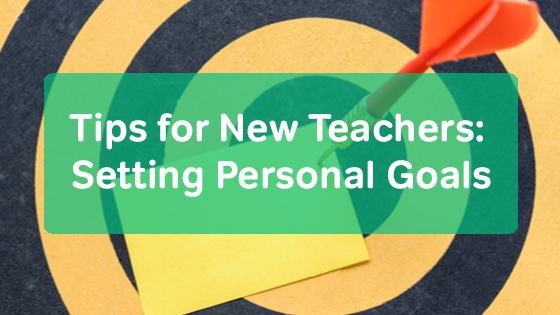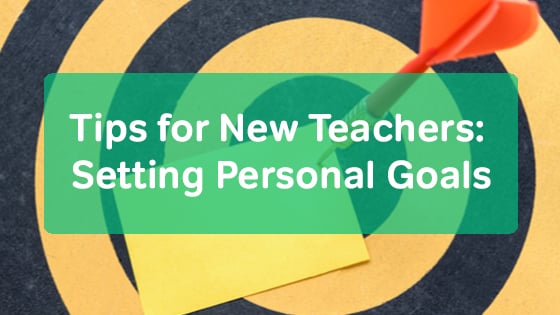
Goal setting is an important and ongoing part of any career. As a teacher, setting personal goals can help you stay focused and motivated. They can also help you develop your sense of self as a teacher. In general, it is good to set both big, long-term goals and small, short-term goals. You can also set goals around things you would like to learn.

Setting Big Goals
Big goals are long-term goals that you work toward over the course of a year or more, or sometimes even a whole career! One common example is a specific position you would like. For instance, you may want to be a school administrator, a college professor, a literacy coach, or a director of an early childhood education center. Perhaps you are a substitute teacher now, and your dream is to have your own classroom. If your goal is to improve your teaching and become an expert, your goal could be to become a certified “Master Teacher” in your state.
You can also set big goals about changes you would like to see in your school or district. For example, a goal could be to begin an after-school chess program or lead an initiative to increase inclusion for children with disabilities.
Setting Small Goals
Small goals are more immediately achievable than big goals, but are no less important! You can either break down your big goals into smaller steps or create separate small goals.
Breaking down big goals involves thinking about all of the parts needed to reach your dream. Try making a list of the things you need to achieve. For instance, say your goal is to teach in your own classroom. Smaller steps to reach that goal might include taking the Praxis, becoming certified, and interviewing at a school.
Separate small goals don’t necessarily lead up to a bigger goal, but they are important for improvement and motivation day-to-day. Often, I set these small goals when I want to better my teaching skills in a certain area. Some small goals I have set in the past are:
- Tell parents one good thing about their child’s day every afternoon.
- Stay more organized by cleaning up lesson materials at the end of each day.
- Incorporate at least 45 minutes of active play each day.
- Ask for help when I feel overwhelmed.
These goals should be relevant to you and your classroom and they should be achievable. If a “small goal” feels more like a “big goal,” it will be overwhelming. Make things “bite-sized!” For example, if you want to be more positive with your students, first try a small goal like, “Give each child 2 pieces of specific praise each day,” then build up from there.
Setting Skill-based Goals
Skill-based goals can be either big or small. They can be as big as “earn a Master’s degree” or as bite-sized as “attend a workshop to learn about STEM lessons.” In general, these goals are based on things you would like to learn, and can often be combined with other goals you have set for yourself.
As you learn and grow as an educator, your goals may change. That’s okay, too! What’s important is having something to work toward and to keep you on track toward becoming the best teacher you can be! 🙂
By the way, sign up for our 1 Week Free Trial to try out Magoosh Praxis Prep!


